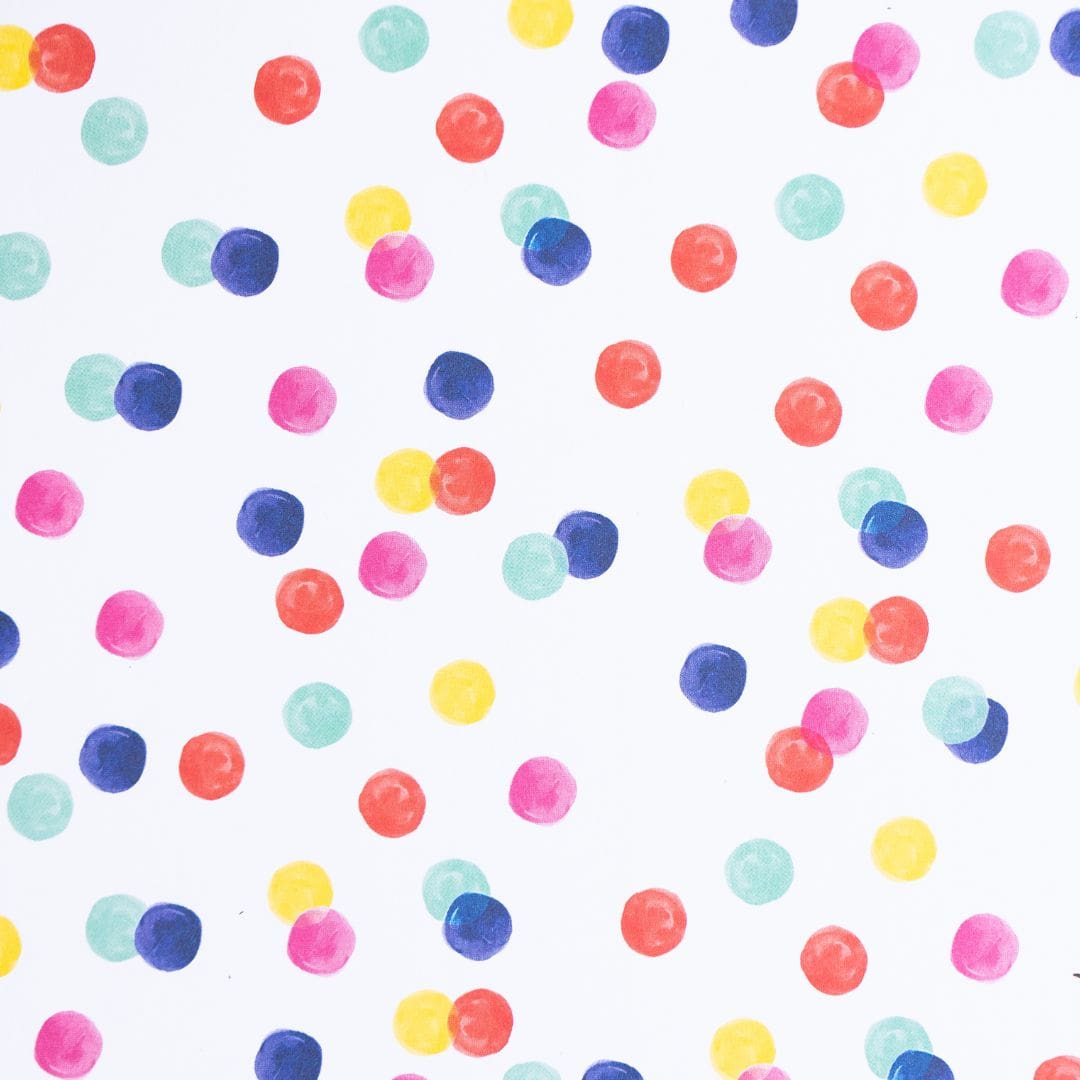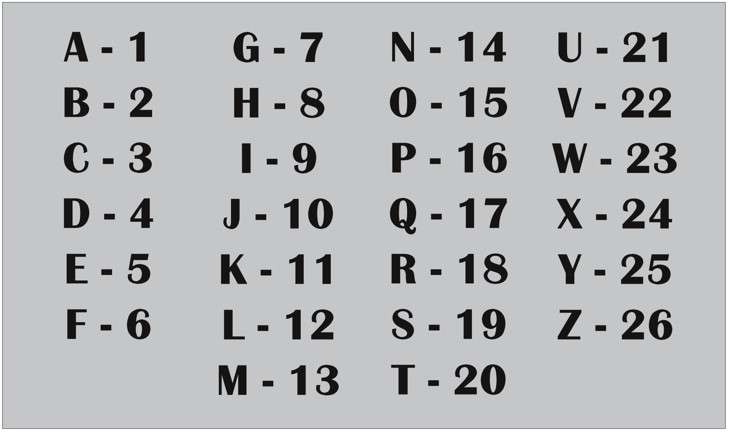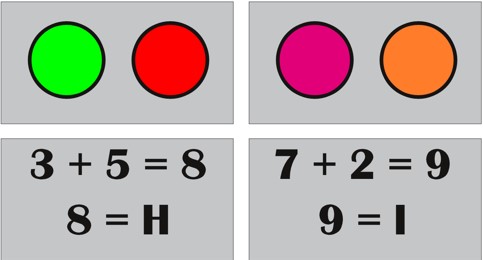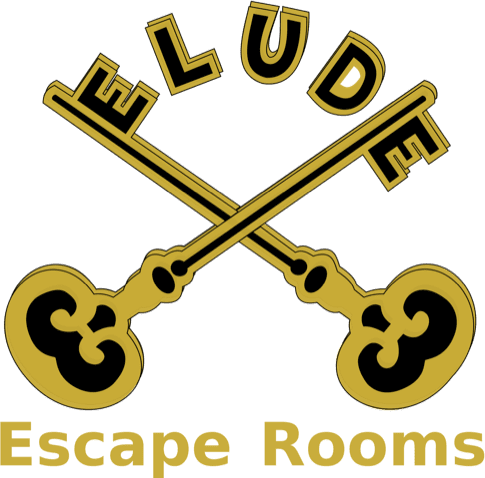
Here’s a code that will put a spot of colour into your Escape Room experience! The Colour Dot cipher is a way to substitute letters of the alphabet for splashes of colour, via numbers used in easy sums that are then swapped out. It might not be a code that you have encountered before, but it is definitely one that will brighten up any puzzle.
Get out your crayons!
For this we don’t actually want your full set of Derwents, with just nine colours recommended.
We need to choose some that are distinct enough from each other so as not to be muddled (having a unique colour for each of our 26 letters would be a bit too fiddly).
Today, we will go with these nine colours and give them number values from 1 to 9.

Along with this we will need a key that just reminds everyone of the alphabet and the number order that goes with it.

A Pot of Code at the end of the Rainbow Through the magic of basic mathematics, we can can swap out the letters in our secret message for singular or multiple coloured dots based on reaching the sum total that you need. With our code element choices above, A will always be a singular dark blue dot, but B could be two dark blue dots or a singular orange one. Likewise, Z will need to be a combination of the higher value dots, but beyond these restrictions your combinations can be varied, within the same message or even the same word.

Reversing the Rainbow To go backwards and decrypt a dot communication, take the group of dots and determine the numbers their sum indicates. This number will give you your letter.
The beauty of this cipher is that as it uses simple colours, all your puzzle maker needs to do is keep the key consistent. Take a look around your escape room for series of colourful interludes, as these props could be just what you need to decode for the next clue. Tiles, carefully arranged pencils, pots, eyeballs (!), toy cars, building blocks, embroidery hoops, candles, even just simple stickers. As always, the presence of this kind of code is not something you need to memorise – the key will be somewhere in your Escape Room! Don’t just assume you can guess it, they might be really tricky and have mixed up the alphabet (e.g. A=15, B=24, etc) This might not appeal to your chromatically challenged players, but a team functions best when its members help each other out anyway!
If you prefer to use even fewer colours, that is also fine. We’ve put nine in so we can get up to Z with just three dots. If you want to use 26 of the same coloured marbles to spell out Z that’s fine, but we have chosen to make it a bit quicker by using more colours. Also ink is expensive!
Look for this in bright, colourful Escape Rooms, or use it yourself when making puzzles for friends. (note: it’s a great way to keep young puzzle-solvers busy on those days at home)


